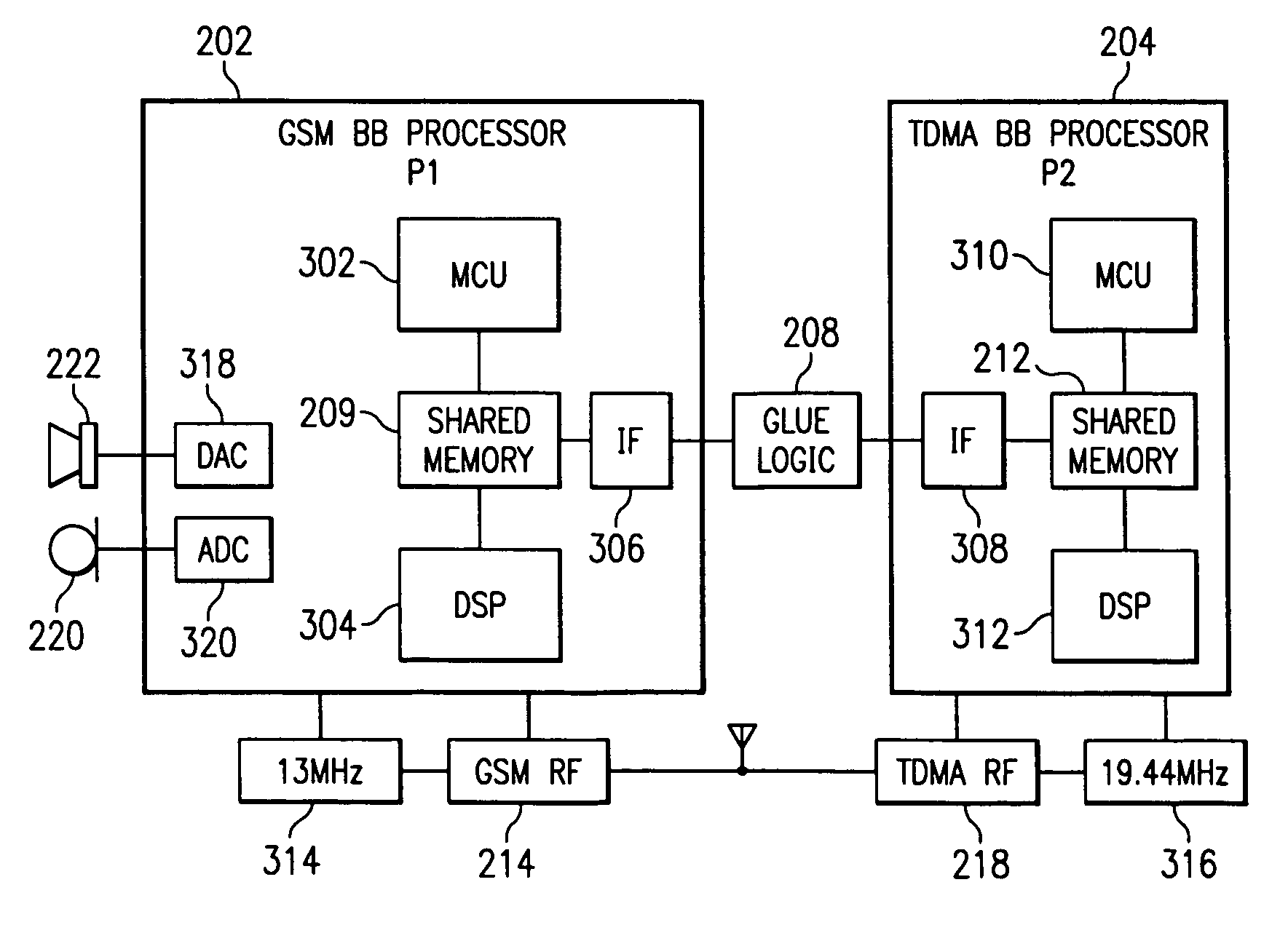System and method for rate adaptation in a wireless communication system
a wireless communication system and wireless communication technology, applied in the field of mobile telephony, can solve the problems of unsatisfactory long development time for each chipet, adversely affect voice quality, and add to development costs, and achieve the effect of reducing jitter
- Summary
- Abstract
- Description
- Claims
- Application Information
AI Technical Summary
Benefits of technology
Problems solved by technology
Method used
Image
Examples
Embodiment Construction
[0023]A wireless telephone according to an embodiment of the present invention includes first and second baseband processors. The first baseband processor functions as system master, and the second processor functions as system slave. The first baseband processor interfaces to system controls, such as power supply, man-machine interface (MMI), and the like.
[0024]A wireless telephone according an embodiment of the present invention includes a GSM master baseband processor and a TDMA slave co-processor. Functions dedicated to the GSM master processor include GSM system functions and control of the GSM radio frequency (RF) functions. Functions dedicated to the slave co-processor include TDMA system functions and control of the TDMA RF functions. The master processor also controls a variety of shared functions including, for example, RF front end, display, keypad, accessories, battery, audio path, and slave processor watchdog, charging, power down, reset, etc., functions.
[0025]A wireles...
PUM
 Login to View More
Login to View More Abstract
Description
Claims
Application Information
 Login to View More
Login to View More - R&D
- Intellectual Property
- Life Sciences
- Materials
- Tech Scout
- Unparalleled Data Quality
- Higher Quality Content
- 60% Fewer Hallucinations
Browse by: Latest US Patents, China's latest patents, Technical Efficacy Thesaurus, Application Domain, Technology Topic, Popular Technical Reports.
© 2025 PatSnap. All rights reserved.Legal|Privacy policy|Modern Slavery Act Transparency Statement|Sitemap|About US| Contact US: help@patsnap.com



